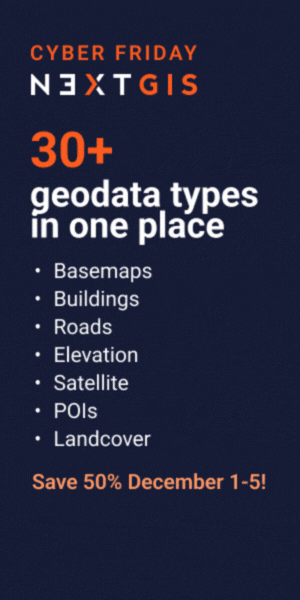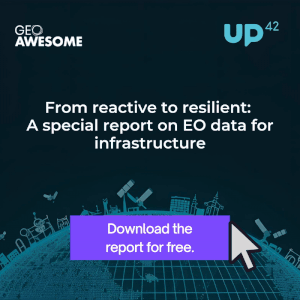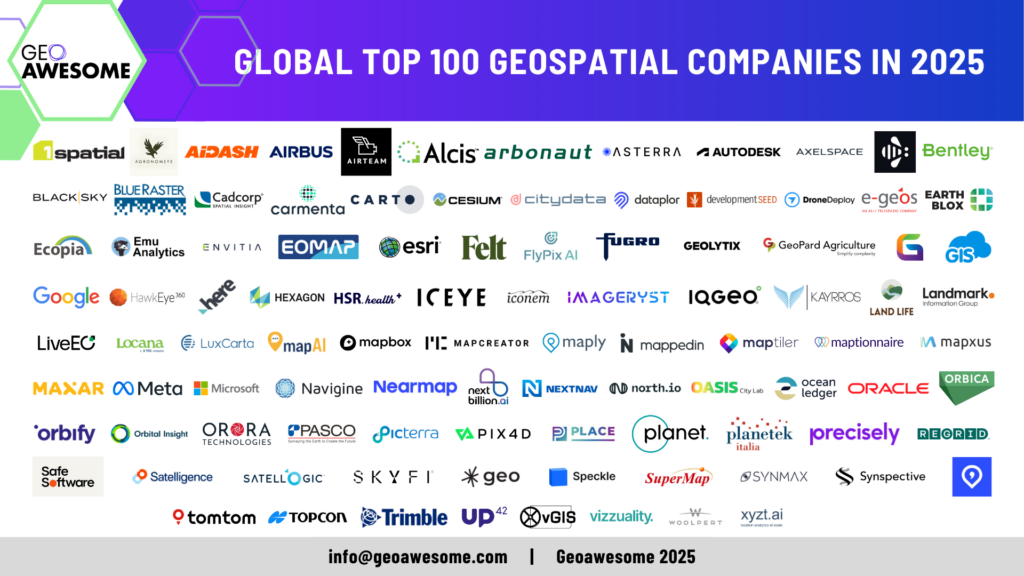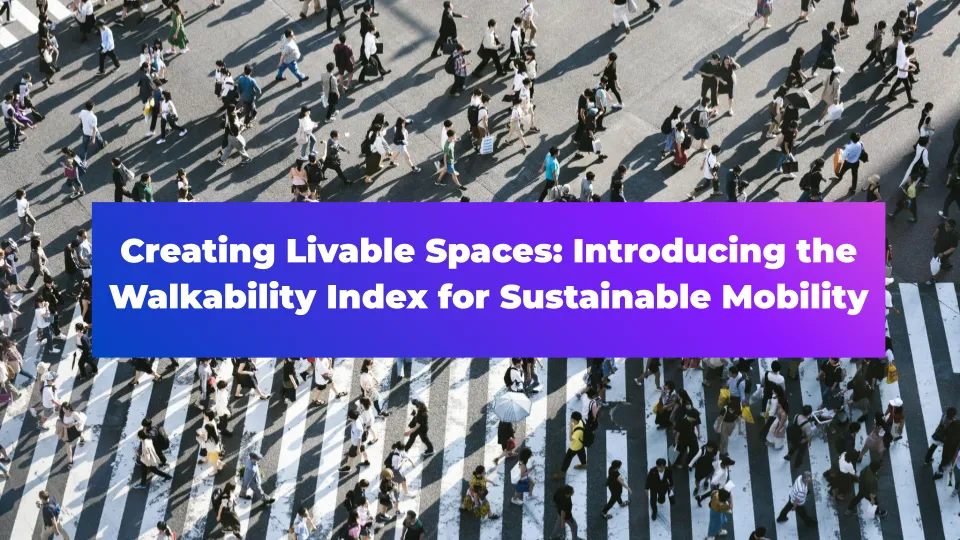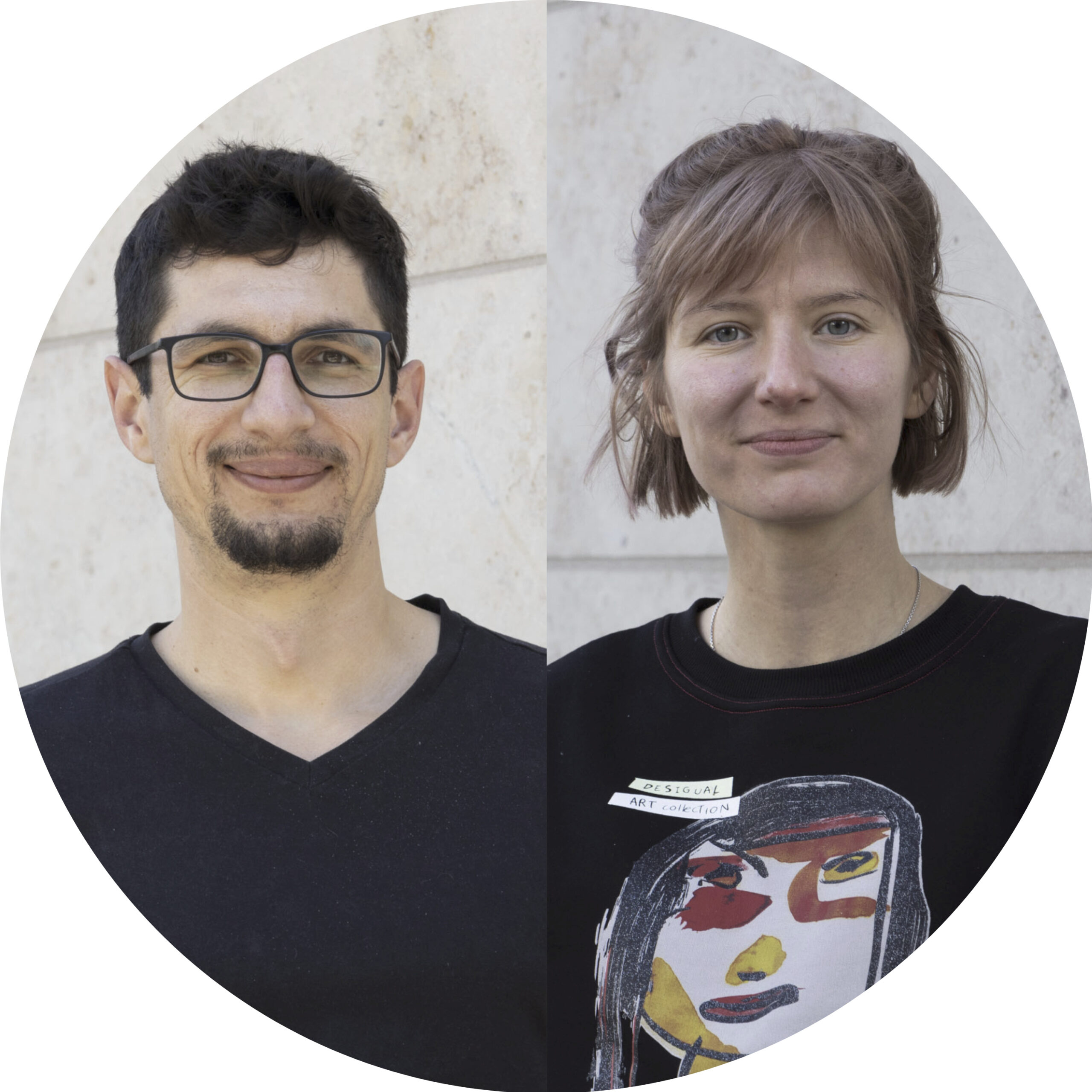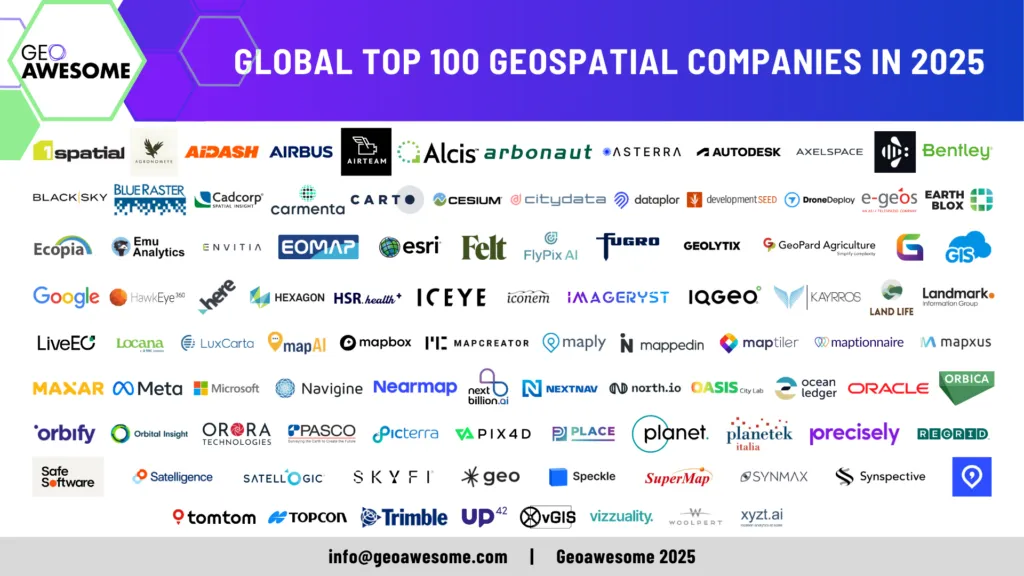
Global Top 100 Geospatial Companies – 2025 Edition
The wait is over! We are excited to officially unveil the Global Top 100 Geospatial Companies 2025 list—our annual ranking of the most innovative and influential companies shaping the geospatial industry.
This list, meticulously curated by a panel of industry experts for the 7th time, highlights the organizations leading the way in GIS, Earth Observation, AI-powered analytics, location intelligence, and more.
The Global Top 100 Geospatial Companies 2025 serves as a key resource for professionals, investors, and decision-makers looking to understand the evolving landscape of geospatial technology. From startups disrupting the market to established giants setting new benchmarks, this list reflects the diversity and dynamism of our industry.
Join us in celebrating these trailblazers who are shaping the future of geospatial technology and transforming our understanding of the world in this 2024 edition
The 2025 expert committee, a distinguished group of experts, brought together a diverse range of expertise and insights to curate the Global Top 100 Geo list. This year’s committee included:
- Sives Govender, Research Group Leader, CSIR, South Africa and Co- founder and coordinator of Environmental Information System-Africa
- Siau Yong, Director, GeoSpatial and Data & Chief Data Officer, Singapore Land Authority
- Osamu Ochiai, Senior Engineer, Manager for Satellite Applications and Operation Center at Japan Aerospace Exploration Agency
- Justyna Redelkiewicz, Head of Section Entrepreneurship and Environment at the European Union Agency for Space Programme (EUSPA)
- Chiara Solimini, Space Downstream Market Officer at the European Union Agency for Space Programme (EUSPA)
- Peter Rabley, CEO at Open Geospatial Consortium (OGC)
- Denise McKenzie, Manging Partner at PLACE Trust
- Dr. Nadine Alameh, Executive Director of the Taylor Geospatial Institute
- Paloma Merodio, VP at National Institute of Statistics and Geography of Mexico (INEGI)
and
- Aleksander Buczkowski and Muthukumar Kumar for Geoawesome
In the coming weeks, we will be sharing more analysis about the Geospatial industry and the ecosystem via our newsletter. Sign up to stay informed!
Sign up to our newsletter to stay updated
#GlobalTop100Geo 2025 Edition
AND here are the Global Top 100 Geospatial Companies of 2024 listed alphabetically.
| Previous Editions | Company name | Website |
| Part of 2022, 2023 and 2024 lists | 1Spatial | www.1spatial.com |
| Part of 2024 list | Agronomeye | www.agronomeye.com.au |
| Part of 2023 and 2024 lists | AIDASH | https://www.aidash.com/ |
| Part of 2022, 2023 and 2024 lists | Airbus Defence and Space | https://space-solutions.airbus.com |
| New entrant | Airteam Aerial Intelligence GmbH | https://airteam.ai/ |
| Part of 2022, 2023 and 2024 lists | Alcis Holdings Ltd | https://www.alcis.org/ |
| New entrant | Arbonaut | https://www.arbonaut.com |
| Part of 2022, 2023 and 2024 lists | ASTERRA | https://asterra.io/ |
| Part of 2019, 2021, 2022, 2023 and 2024 lists | Autodesk | https://www.autodesk.com |
| New entrant | Axelspace Corporation | https://www.axelspace.com/ |
| New entrant | Bee Maps (by HiveMapper) | https://beemaps.com |
| Part of 2019, 2021, 2022, 2023 and 2024 lists | Bentley | https://www.bentley.com/en |
| New entrant | BlackSky | blacksky.com |
| Part of 2023 and 2024 lists | Blue Raster | https://www.blueraster.com/ |
| Part of 2023 and 2024 lists | Cadcorp | https://www.cadcorp.com |
| Part of 2022 and 2024 list | Carmenta Geospatial Technologies | https://www.carmenta.com/ |
| Part of 2019, 2021, 2022, 2023 and 2024 lists | CARTO | https://carto.com/ |
| Part of 2021, 2022, 2023 and 2024 lists | Cesium | https://cesium.com/ |
| Part of 2023 and 2024 lists | CITYDATA | https://citydata.ai |
| New entrant | dataplor | https://www.dataplor.com/ |
| Part of 2019, 2021, 2022, 2023 and 2024 lists | Development Seed | developmentseed.org |
| Part of 2019, 2021, 2022, 2023 and 2024 lists | DroneDeploy | DroneDeploy.com |
| Part of 2024 list | e-geos | https://www.e-geos.it/en/ |
| Part of 2024 list | Earth Blox | https://www.earthblox.io/ |
| Part of 2022, 2023 and 2024 lists | Ecopia AI | https://www.ecopiatech.com/ |
| Part of 2022, 2023 and 2024 lists | Emu Analytics | www.emu-analytics.com |
| Part of 2023 and 2024 lists | Envitia Ltd | www.envitia.com |
| Part of 2023 and 2024 lists | EOMAP | eomap.com |
| Part of 2019, 2021, 2022, 2023 and 2024 lists | ESRI | www.esri.com |
| Part of 2024 list | Felt | http://felt.com/ |
| New entrant | FlyPix AI | https://flypix.ai/ |
| Part of 2023 and 2024 lists | Fugro | www.fugro.com |
| New entrant | Geolytix | https://geolytix.com/ |
| New entrant | GeoPard Agriculture | https://geopard.tech |
| New entrant | GeoWGS84 | https://www.geowgs84.com/ |
| Part of 2019, 2021, 2022, 2023 and 2024 lists | GIS Cloud | www.giscloud.com |
| Part of 2019, 2021, 2022, 2023 and 2024 lists | https://www.google.com/ | |
| New entrant | HawkEye 360 | he360.com |
| Part of 2019, 2021, 2022, 2023 and 2024 lists | HERE Technologies | https://www.here.com/ |
| Part of 2019, 2021, 2022, 2023 and 2024 lists | Hexagon | Hexagon.com |
| New entrant | HSR.health | https://www.hsr.health |
| Part of 2023 and 2024 lists | ICEYE | https://www.iceye.com |
| New entrant | Iconem | https://iconem.com/ |
| New entrant | Imageryst | https://www.imageryst.com/ |
| Part of 2024 list | IQGeo | https://www.iqgeo.com/ |
| Part of 2024 list | Kayrros | www.kayrros.com |
| New entrant | Land Life | https://landlifecompany.com/ |
| New entrant | Landmark Information Group | https://www.landmark.co.uk/ |
| Part of 2022, 2023 and 2024 lists | LiveEO | http://live-eo.com/ |
| Part of 2023 and 2024 lists | Locana | www.locana.co |
| Part of 2022 and 2024 list | LuxCarta | https://luxcarta.com |
| New entrant | MapAI | https://mapai.net/ |
| Part of 2019, 2021, 2022, 2023 and 2024 lists | Mapbox | https://www.mapbox.com/ |
| Part of 2021, 2022, 2023 and 2024 lists | Mapcreator | mapcreator.io |
| Part of 2023 and 2024 lists | Mapxus | https://www.mapxus.com/ |
| Part of 2024 list | Maply | https://maply.com |
| Part of 2021, 2022, 2023 and 2024 lists | Mappedin | www.mappedin.com |
| Part of 2019, 2021, 2022, 2023 and 2024 lists | MapTiler | https://maptiler.com |
| Part of 2019, 2021, 2022, 2023 and 2024 lists | Maptionnaire | https://maptionnaire.com/ |
| Part of 2022, 2023 and 2024 lists | Maxar Technologies | https://www.maxar.com |
| Part of 2019, 2021, 2022, 2023 and 2024 lists | Meta | https://www.meta.com/de/en/ |
| Part of 2021, 2022, 2023 and 2024 lists | Microsoft | https://www.microsoft.com/en-us/maps |
| New entrant | Navigine | https://navigine.com/ |
| Part of 2021, 2022, 2023 and 2024 lists | Nearmap | https://www.nearmap.com/us/en |
| Part of 2024 list | NextBillion.ai Pte Ltd | https://nextbillion.ai/ |
| Part of 2021, 2022 and 2024 list | NextNav | https://nextnav.com/ |
| Part of 2024 list | North.io GmbH | https://www.north.io |
| New entrant | Oasis City Lab | https://oasiscitylab.eu |
| New entrant | Ocean Ledger | https://www.ocean-ledger.com/ |
| Part of 2024 list | Oracle | http://www.oracle.com |
| Part of 2023 and 2024 lists | Orbica | https://orbica.world/?g=o |
| Part of 2023 and 2024 lists | Orbify | https://orbify.com |
| Part of 2019, 2021, 2022, 2023 and 2024 lists | Orbital Insight | https://orbitalinsight.com/ |
| New entrant | OroraTech | https://ororatech.com/ |
| Part of 2022, 2023 and 2024 lists | PASCO CORPORATION | https://www.pasco.co.jp/eng/ |
| Part of 2021, 2022, 2023 and 2024 lists | Picterra | www.picterra.ch |
| Part of 2019, 2021, 2022, 2023 and 2024 lists | Pix4D | https://www.pix4d.com/about-us |
| Part of 2022, 2023 and 2024 lists | PLACE | https://www.thisisplace.org |
| Part of 2019, 2021, 2022, 2023 and 2024 lists | Planet | https://www.planet.com/ |
| New entrant | Planetek Italia | https://www.planetek.it/ |
| Part of 2024 list | Precisely | https://www.precisely.com |
| Part of 2022, 2023 and 2024 lists | Regrid | https://regrid.com |
| Part of 2023 and 2024 lists | Safe Software | www.safe.com |
| Part of 2019, 2021, 2022, 2023 and 2024 lists | Satelligence | www.satelligence.com |
| Part of 2022 and 2024 list | Satellogic | www.satellogic.com |
| Part of 2024 list | SkyFi | https://www.skyfi.com/ |
| Part of 2019, 2021, 2022, 2023 and 2024 lists | Sparkgeo | www.sparkgeo.com |
| Part of 2024 list | Speckle | https://speckle.systems/ |
| Part of 2024 list | SuperMap Software Co., Ltd. | https://www.supermap.com/en-us/ |
| Part of 2023 and 2024 lists | SynMax | https://www.synmax.com/ |
| Part of 2022, 2023 and 2024 lists | Synspective Inc. | https://synspective.com/ |
| Part of 2024 list | Textomap | https://www.textomap.com/ |
| Part of 2019, 2021, 2022, 2023 and 2024 lists | TomTom | https://www.tomtom.com/ |
| Part of 2021, 2022, 2023 and 2024 lists | Topcon Positioning | https://www.topconpositioning.com/ |
| Part of 2019, 2021, 2022, 2023 and 2024 lists | Trimble | https://www.trimble.com/ |
| Part of 2021, 2022, 2023 and 2024 lists | UP42 | www.up42.com |
| Part of 2024 list | vGIS Inc. | https://www.vGIS.io |
| New entrant | Vizzuality | https://vizzuality.com |
| New entrant | Woolpert, Inc. | https://www.woolpert.com |
| Part of 2022, 2023 and 2024 lists | xyzt.ai | www.xyzt.ai |
Frequently Asked Questions (FAQs)
Q1. How was the list created?
Our selection process was meticulous. We reviewed over 1000 companies (up from 800 last year), narrowing them down to a shortlist of 261 based on past listees (2019, 2021, 2022, 2023 and 2024), expert recommendations, and nominated companies. A distinguished expert committee then voted on the shortlisted companies. The final Global Top 100 Geospatial Companies 2025 list reflects the collective judgment and consensus of these experts.
Q2. Is the list ranked?
No, the list is not a ranking. Companies are listed alphabetically to equally recognize all 100 leading geospatial companies without implying any hierarchy.
Q3. Who was part of the expert committee?
The 2025 expert committee, a distinguished group of experts, brought together a diverse range of expertise and insights to curate the Global Top 100 Geo list. This year’s committee included:
- Sives Govender, Research Group Leader, CSIR, South Africa and Co- founder and coordinator of Environmental Information System-Africa
- Siau Yong, Director, GeoSpatial and Data & Chief Data Officer, Singapore Land Authority
- Osamu Ochiai, Senior Engineer, Manager for Satellite Applications and Operation Center at Japan Aerospace Exploration Agency
- Justyna Redelkiewicz, Head of Section Entrepreneurship and Environment at the European Union Agency for Space Programme (EUSPA)
- Chiara Solimini, Space Downstream Market Officer at the European Union Agency for Space Programme (EUSPA)
- Peter Rabley, CEO at Open Geospatial Consortium (OGC)
- Denise McKenzie, Manging Partner at PLACE Trust
- Dr. Nadine Alameh, Executive Director of the Taylor Geospatial Institute
- Paloma Merodio, VP at National Institute of Statistics and Geography of Mexico (INEGI)
and
- Aleksander Buczkowski and Muthukumar Kumar for Geoawesome
Q4. What information did the expert committee consider?
Geoawesome announced an open call for nominations on October 1, 2024. Companies voluntarily provided insights through a structured questionnaire, detailing their vision, operations, and impact. The committee also relied on their extensive industry experience and independent research to make informed decisions.
Q5. What was new in the nomination process this year?
For the 2025 edition, we introduced key enhancements to improve the nomination process:
? Enhanced Focus on Core Competencies – We placed a stronger emphasis on core geospatial competencies and emerging industry trends shaping the future.
? Streamlined Nomination Process – The nomination form was simplified, removing basic company data fields and reducing the total number of questions to make the process more efficient.
Q6. What were the selection criteria?
There were no rigid selection criteria imposed on the expert panel. Each expert applied their unique perspective to assess the companies, ensuring a broad and well-rounded evaluation. As in past years, our expert panel will review all nominations and decide the final list. The nomination phase focused on the following aspects:
- Product and Impact on the Industry
- Innovation and Technological Advancement
- Contribution to the Community
- Commitment to Diversity, Equity, and Inclusion (DEI)
- Environmental, Social, and Governance (ESG) Practices
Q7. My company deserves to be on the list! How can I improve my chances?
We understand your passion, and we acknowledge that many deserving companies couldn’t be included due to space constraints. The best way to improve your chances for next year’s list is to nominate your company when the 2026 nominations open. The details companies share during the nomination process play a crucial role in helping our experts understand their impact. If you would like to take a look at the questions for the 2025 nomination, check out our google doc.
? Want to stay updated? Sign up to our newsletter to get notified when nominations open.
Q8. I have feedback or further questions. Whom should I contact?
We value your feedback and are happy to address any questions! You can reach out to Muthu at muthu@geoawesome.com.
We encourage you to share this announcement and participate in the discussion on social media using the hashtag #GlobalTop100Geo. Let’s celebrate the organizations that are making a difference in the geospatial world!
#GlobalTop100Geo 2024 Edition
Looking for the previous edition? Here you go!
